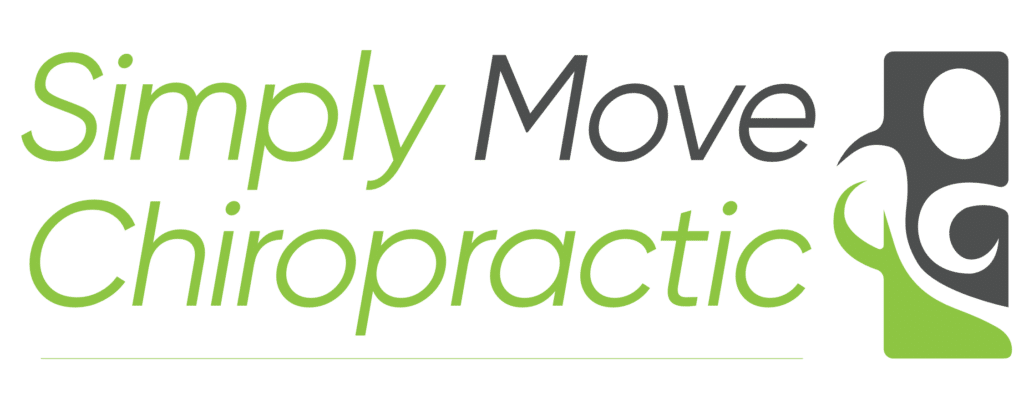If you’re struggling with persistent hip pain in Charlotte, you’re not alone. Hip pain can come from a variety of sources—ranging from tendinopathies like greater trochanteric pain syndrome (GTPS) to degenerative conditions like hip osteoarthritis (OA). At Simply Move Chiropractic, I use advanced techniques like shockwave therapy, often in combination with red laser therapy and targeted rehabilitation, to help my patients reduce pain and get back to moving with confidence.
Understanding the Hip and Its Pain Generators
The hip joint is a deep ball-and-socket joint supported by large muscles like the gluteus medius, gluteus minimus, piriformis, and iliopsoas. Pain in this region can come from overuse, inflammation, or degeneration of these soft tissues or the joint itself. Two of the most common culprits I see in the clinic are:
Greater Trochanteric Pain Syndrome (GTPS): Inflammation or degeneration of the tendons that attach to the greater trochanter.
Hip Osteoarthritis (OA): Wear and tear of the cartilage in the joint leading to stiffness, pain, and reduced mobility.
Both of these conditions can be difficult to treat with conventional therapies alone. That’s where shockwave therapyoffers real promise.
A systematic review examining the midterm effectiveness of extracorporeal shockwave therapy (ESWT) for this condition found promising results. This review analyzed multiple studies and concluded that ESWT effectively reduced pain and improved shoulder function in patients who hadn’t responded to other treatments. Importantly, these benefits persisted for at least six months after treatment.
The findings also suggest that ESWT is a safe alternative to surgery, offering similar outcomes with fewer risks and less downtime. However, the review did highlight a need for more standardized protocols to guide dosing and ensure long-term effectiveness. In my practice, I use evidence-based parameters to tailor shockwave therapy sessions for each patient, maximizing their results.
What Is Shockwave Therapy?
Extracorporeal Shock Wave Therapy (ESWT) uses high-energy acoustic waves that penetrate deep into tissues. These waves stimulate cellular repair through a process called mechanotransduction, promoting increased blood flow, collagen production, and a reduction in inflammation. Unlike medications that only mask the pain, shockwave therapy helps stimulate the body’s natural healing processes.
There are two primary types of shockwave therapy used in clinical settings:
Focused shockwave (f-ESWT): Delivers energy deeper into tissues, making it ideal for joint or bone-related issues like osteoarthritis.
Radial shockwave (r-ESWT): More superficial, commonly used for soft tissue issues like tendinopathies.
What the Research Says
Several clinical trials support the use of ESWT for hip-related conditions:
A randomized trial on GTPS found that both eccentric exercise and ESWT significantly reduced pain and improved function over six months. Importantly, combining both therapies produced even better outcomes for those who didn’t respond to a single treatment. This supports my own approach of layering therapies like shockwave and red laser therapy for enhanced results.
A pilot trial on hip OA compared focused and radial ESWT. Both forms significantly reduced pain and improved joint function, but focused shockwave therapy had superior results based on VAS and WOMAC scores. This helps me tailor the treatment depending on whether the pain source is muscular or articular.
A comprehensive review of musculoskeletal pain concluded that ESWT is a safe, evidence-based treatment for a variety of conditions, including GTPS, hip OA, and even bone-related problems like osteonecrosis. The review also confirmed the synergistic benefits of combining shockwave with other therapies like exercise and stretching.
Why Choose Shockwave Therapy?
Both of these studies highlight shockwave therapy’s ability to improve shoulder function and reduce pain for patients struggling with chronic conditions. Whether you’re dealing with calcific tendinitis or frozen shoulder, this treatment could be the breakthrough you’ve been waiting for.
If shoulder pain has been holding you back, don’t hesitate to reach out. Together, we can develop a treatment plan that helps you get back to the activities you love, pain-free.
If TMJ pain has been affecting your daily life and you live in Charlotte, NC, consider scheduling an appointment to explore how dry needling, along with a comprehensive treatment plan, can provide relief and help you regain comfortable, natural jaw movement.
How I Use Shockwave Therapy in Practice
At Simply Move Chiropractic, I offer shockwave therapy as a non-invasive, in-office procedure that takes about 15 minutes per session. Most patients need only 3–6 sessions depending on the severity of their condition. I use it frequently for cases that haven’t responded to traditional stretching, strengthening, or manual therapy alone.
I often combine shockwave with Class IV red laser therapy, which helps reduce inflammation and increase circulation, accelerating the healing process. Together, these therapies provide powerful pain relief and tissue regeneration. For example, in a patient with GTPS, I may use shockwave to target the gluteus medius tendon and then follow up with red laser therapy to calm the area and promote deeper healing.
Long-Term Relief Through Integrated Care
What sets my practice apart is the integration of manual therapy, Active Release Technique (ART), red laser therapy, and shockwave therapy into a cohesive plan tailored to each patient’s condition and lifestyle. Whether you’re dealing with chronic hip pain or early-stage arthritis, these modalities work together to reduce pain, improve function, and delay or prevent more invasive interventions.
Ready to Take the Next Step?
If you’re looking for non-invasive hip pain relief in Charlotte, NC, shockwave therapy could be the solution. Let’s create a treatment plan that works for your unique situation. Reach out today to schedule a consultation and see how we can get you moving pain-free again.



